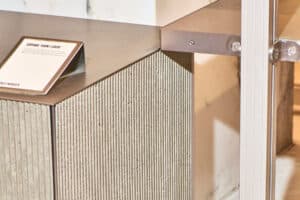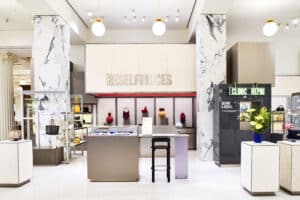In the last decade, the concept of beauty and value has evolved immeasurably. Take ivory for instance. Half a century ago, ivory was aspirational. A sign of quality, luxury and sophistication. Fast forward to today and it has become the symbol of a brutal and illegal poaching trade. Regardless of its aesthetic qualities, it is largely unwanted by the vast majority of the global population.
Holistic beauty is the idea that materials and products possess aesthetic qualities and value beyond the surface. In the 21st century, this matters. As we look to tackle issues such as climate change, waste, resource depletion and exploited labour markets, designers need to look beyond the surface.
Since the turn of the century, the market has demonstrated the importance of values, principles and impact. Customers’ expectations have risen, and clients’ appetite for investment and industry change has also grown. For this reason, the concept of holistic beauty has become increasingly relevant to designers and businesses.
One of the mistakes we made when we set up Sibley Grove in 2010 was to become fixated on sustainability in a design industry driven by trends and aesthetics. Trends are inherently unsustainable because they drive consumption and force products and spaces to become redundant ahead of their time, impacting the planet and costing clients. When trying to make a broken process ‘more sustainable’, the focus is on being ‘less bad’, and limiting the negative impact of the work you’re delivering. With this mentality, it is hard to justify doing anything. It is not possible to be sustainable; everything has an impact to some degree – both positive and negative. A designer’s job is to ensure that the positives outweigh the negatives and to help clients understand the far-reaching implications of the decisions we make collectively.
In 2011, we were invited to Hamburg to meet Michael Braugart, co-founder of Cradle to Cradle, and he turned our approach upside down. He encouraged us to forget sustainability and focus on impact (positive and negative), quality and holistic beauty.
It is far better for designers to think in terms of quality and holistic beauty because holistic beauty encompasses aesthetics, history, culture, people and the environment. There is nothing beautiful about a toxic product or a material created using exploited labour, but there is something wonderful about products of cultural value, clean air, clean oceans and a closer union between humanity and the natural world.
Clearly, there is a commercial aspect to the role of a designer. But design can also inspire and motivate people. There are only a few ways to make people less bad, but millions of ways to support people to be good. Designers should thrive when confronted with a problem or a challenge, and holistic beauty can be a positive mechanism to generate designs of value and lasting relevance.




